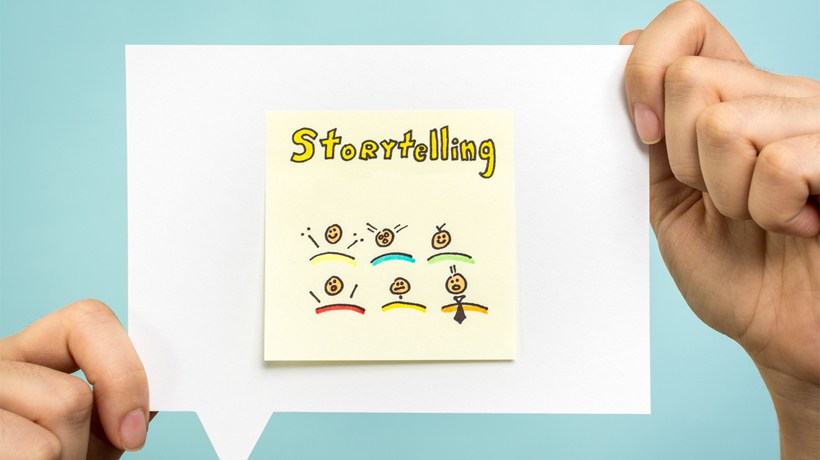Storytelling in eLearning: Some Examples
In a previous article we explored reasons and ways to use stories in eLearning. Stories engage, and stories teach; it makes so much sense to put stories and learning together. But all of this might seem very intangible and ungrounded to you. How exactly do you apply all this? Realistically, how could you use stories in digital learning?
Below are some of our own stories; the best way to illustrate this is, after all, through stories themselves. We hope that these examples inspire you.
1. When Stories Illustrate What You’re Teaching
Boring content, even something as dull as financial legislation, can be made interesting using stories. In some courses we built for Wiseradviser we used stories to illustrate what was being taught. The learner is given some information and then presented with a case study that illustrates how that information applies in the real world.
The people who learn from these Wiseradviser courses are training to help others with their debt problems. They’re naturally empathetic and relate to other people’s stories. If they get something wrong here and the character suffers as a result, that will stick with these learners; they’ll remember how they felt when they failed the character, will learn through the pain of failure, and won’t make the same mistake again. These stories are brief but still engaging; the learner cares about the character and is motivated to learn what they need to in order to help them.
2. When Stories Frame What You’re Teaching
Red Cross Event Officers are responsible for the team and the site at events where the Red Cross are present. To build a training course for them, we started with a story.
Rather than a story being used for an illustration or a section of the teaching, the story and the teaching are woven together throughout. The learner steps into the role of protagonist, and is taken through a day in the life of an Event Officer, seeing all the responsibilities they will have and the challenges they might face. Through various scenarios and branching quizzes, learners can explore different options and see the consequences of their decisions.
One of our favorite parts of this course is the ‘interjects’. At intervals throughout the course, a ringing telephone appears on your screen; and once you hit answer, you have 30 seconds to solve a problem that you might encounter on the day. (You can see a demo of this here.) These interjects further engage the learner in the story, giving them a sense of urgency and then; depending on how they answer; either accomplishment or disappointment that they haven't succeeded. It's gamification, in all its immersive, motivational, educational glory.
Because this course is so saturated in the story, learners can easily relate to and immerse themselves in it. It’s a far cry from having to absorb pages of bullet point lists. And since so many of the skills being taught are nuanced people skills, it's much easier to explain them; and for learners to practice using them; in the context of a story.
3. When Stories Are What You’re Teaching
Sometimes what you need to teach is the story itself.
There’s a better way of learning about Shakespeare than sitting in a classroom listening to concepts you struggle to grasp; or reading a textbook breaking down a living, breathing story into lifeless bullet points. You should just watch the play!
But going to the theater is not always an option. That’s where digital learning comes into its own. We teach Shakespeare’s Twelfth Night here through an interactive video - presented in the modern era, contextualizing it for the learner. Video is accessible anywhere, any time, by whoever needs it, and the learner can watch it as many times as they want to.
The interactive aspect here means learners can get more information in the moment they need it; definitions of strange terminology, insights into the characters, and so on. Video brings the story to life - and the interactivity adds depth and clarity to what they’re learning about it.









